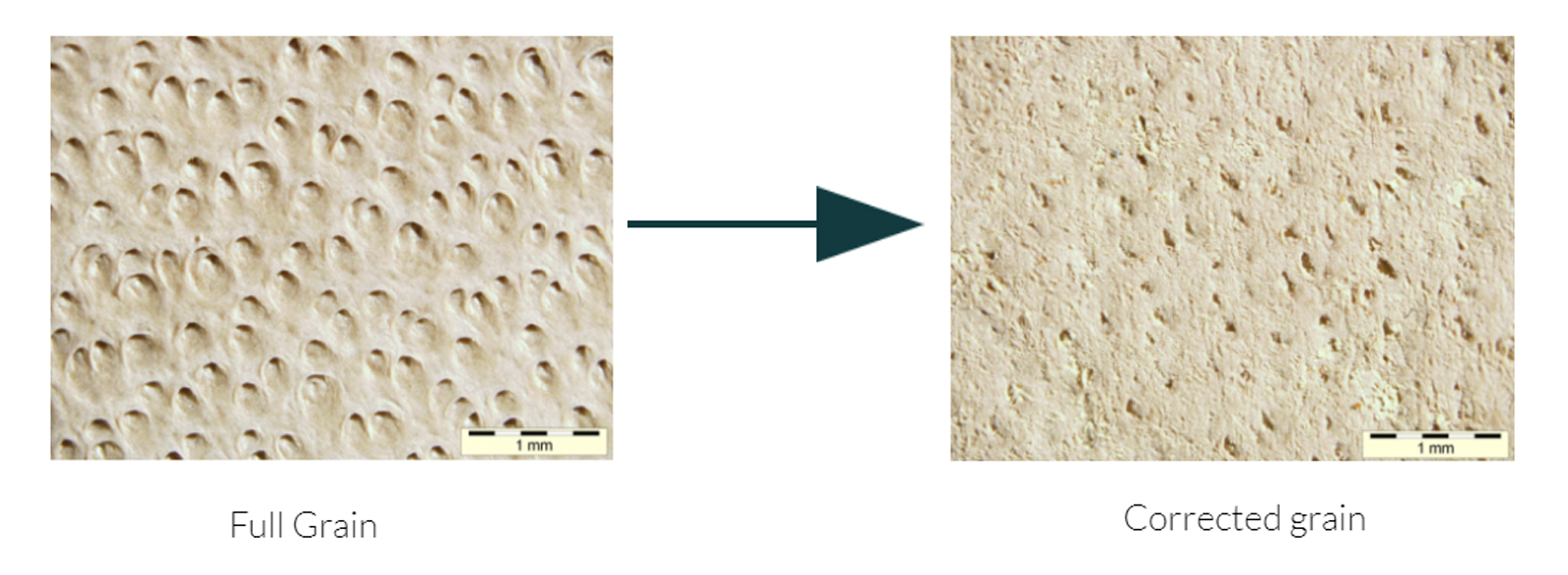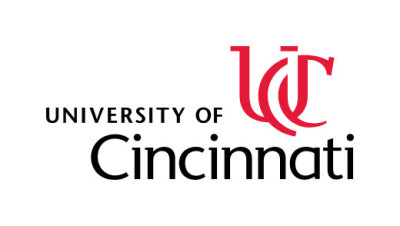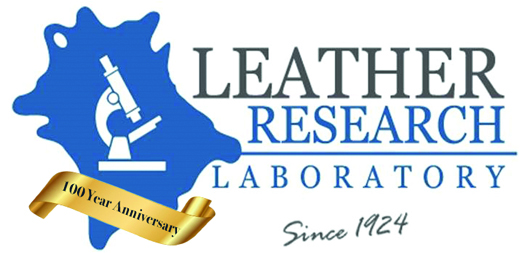CORRECTED GRAIN LEATHER
During their lives, cattle are subjected to a wide variety of skin lesions caused by various ectoparasites (biting flies, ticks, lice, etc), disease, and manure contamination. The result is damage to the grain surface of the leather that must be often be disguised by abrading away (buffing) the scars and then covering the abraded surface with a heavily pigmented paint (“finish”). The process is often completed by embossing or printing an artificial grain pattern onto the surface. Such “corrected grain” leather comprises the majority of leather produced world-wide. It generally commands a lower price than "top grain" or "full grain" leather due to the limited supply of undamaged ("grade A") hides.
Corrected Grain leather is defined by the ITC (International Tanners Council), IULTCS (International Union of Leather Technologists and Chemists Societies) as:
"Leather from which the grain layer has been partially removed by buffing to a depth governed by the condition of the raw material and upon which a new surface has been built by various finishes."





